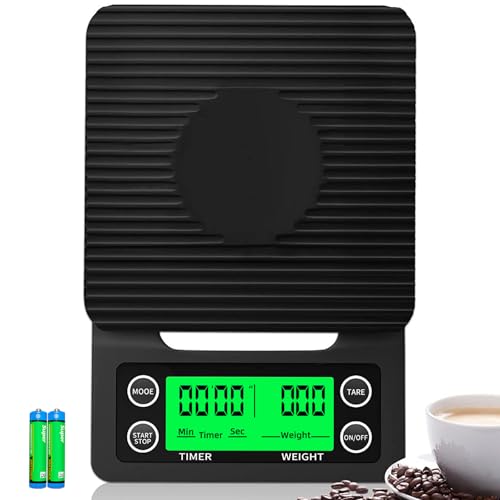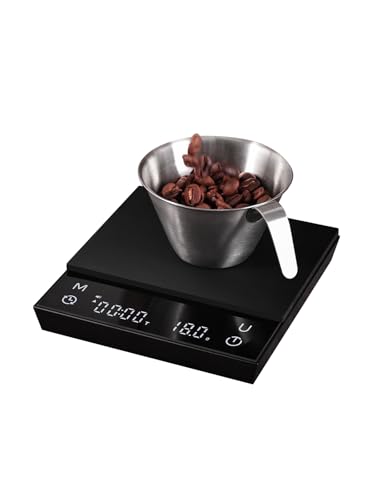When shopping for a coffee scale, most people focus on precision and features like timers and Bluetooth connectivity. But one often-overlooked aspect can affect both usability and longevity: the surface material. Whether you’re brewing espresso or pour-over, the material your scale is made from can directly impact its durability, stability, and ease of cleaning.
Common Coffee Scale Surface Materials
Let’s explore the most common materials and how each performs:
1. Stainless Steel
- Durability: Highly resistant to wear, corrosion, and heat.
- Cleaning: Easy to wipe clean, doesn’t absorb moisture.
- Drawback: Can be slippery, especially with wet carafes or cups.
Best for: Frequent brewers who want a long-lasting, low-maintenance option.
2. Plastic (ABS or Polycarbonate)
- Durability: Reasonably strong but more prone to scratches.
- Cleaning: Simple, but may stain over time with frequent use.
- Drawback: Can feel less premium; some plastics degrade with heat exposure.
Best for: Casual brewers or budget-conscious users.
3. Silicone-Coated
- Durability: Depends on the base material (usually plastic or steel).
- Cleaning: Non-stick and water-resistant; ideal for wet environments.
- Drawback: Can wear out or peel over time.
Best for: Pour-over setups or baristas who value grip and spill protection.
4. Glass
- Durability: Scratch-resistant and heat-tolerant, but fragile.
- Cleaning: Very easy to clean, doesn’t stain.
- Drawback: Can break with sudden impact.
Best for: Aesthetic setups and careful users who prioritize cleanliness.
How Surface Material Impacts Brewing
- Stability: A silicone or textured surface provides grip to avoid tipping cups or carafes.
- Consistency: A heat-resistant surface ensures the scale performs reliably even with hot brews.
- Maintenance: Smooth, sealed surfaces resist water damage and stains ideal for coffee spills.
Other Considerations
- Non-slip feet: Help maintain balance regardless of surface.
- Drip tray compatibility: Especially important for espresso scales.
- Tactile response: Some materials mute button presses or affect responsiveness.
Electric Woks: A Convenient Option for Modern Kitchens
Understanding your material options
The surface material of your coffee scale isn’t just about aesthetics it can affect how stable your brew setup is, how easy the scale is to clean, and how long it lasts. Whether you prioritize performance, maintenance, or durability, understanding your material options helps ensure your scale serves you brew after brew.
If you’re investing in precision gear, don’t overlook the foundation it’s built on.













[…] you’re brewing espresso or pour-over, accurate measurements are non-negotiable. Coffee scales, especially digital ones, are sensitive to moisture, dust, and coffee grounds. Regular maintenance […]
[…] great coffee at home isn’t just about having quality beans it’s about precision. A coffee scale with a timer ensures you’re consistent with every cup, and once you start using one, you’ll […]